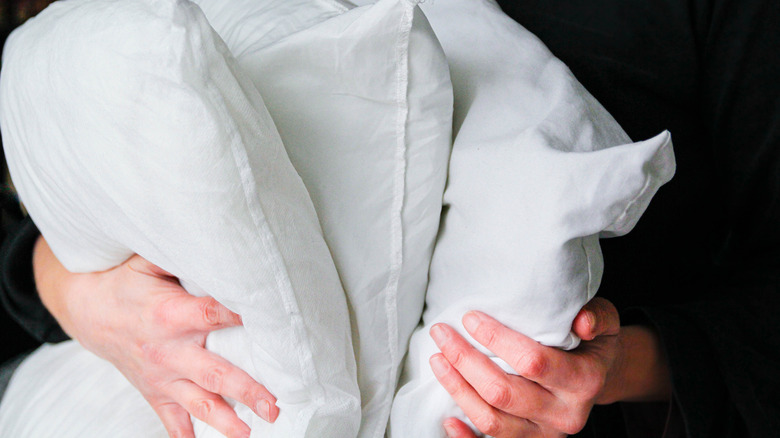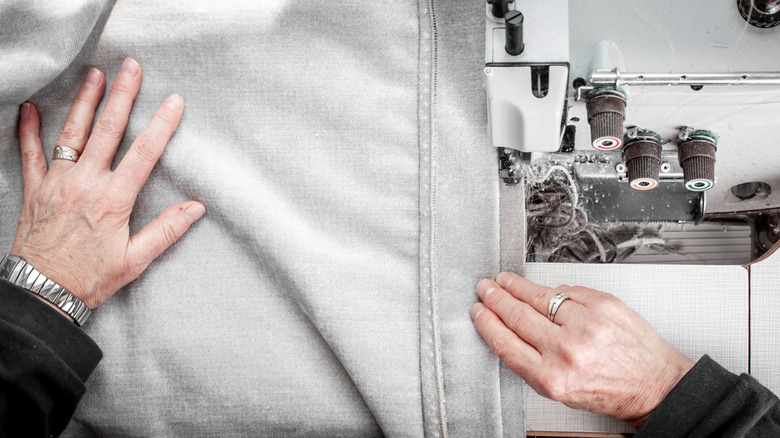Don't Toss An Old Pillow When You Could Be Using It In The Garden Like This
Gardening is not a hobby for the delicate or refined. It's hard to be truly effective unless your knees are on the ground and your hands are in the dirt. There are landscaping and groundskeeping tools to make yard work easier and more comfortable, but when you're pulling that one stubborn weed or carefully putting a plant into a tight spot, you really need to get close to the ground. Most gardeners will use a pad, typically made of foam, to protect their knees from dirt and rocks. Over time, the padding will get old and fall apart. Pebbles can get lodged into the foam, or age and sun exposure may cause cracking. Instead of buying a new one, you may already have a replacement in your home — your bedroom, to be more precise.
Bed pillows are supposed to be replaced every two to three years. The pillows, used night after night, lose their initial shape and level of support over time — both of which are important to our sleep quality and our bodies (even more so after a day of gardening!). Also, they can harbor dust mites, dead skin cells, and skin oilsafter many years of use, even though they still look clean to the naked eye. Since pillows don't break down easily in the landfill, reusing common household items, like pillows, helps Mother Earth, your wallet, and your body.
Creating a durable gardening pad out of a pillow
Turning your pillow into a gardening pad can take minimal effort. The easiest route is to cover the pillow with an old pillowcase and begin using it in the yard. If you store the pillow in a dry space and it doesn't get too dirty from use, you could likely wash it after every few uses. Another option is to enclose the pillow in a garbage bag and insert that into an old pillowcase. That way, the pillow will stay clean and dry, with only the outer case needing to be occasionally washed. Keep in mind that not all pillows can be tossed in the laundry. Some can only be dry cleaned, spot cleaned, or hand-washed, while others can be machine-washed but will require specific settings or care.
You also can use a spray that is used to waterproof outdoor patio furniture, but reapplication would be needed every six months or so, or after washing the pillow. For extra durability and less maintenance, cover the pillow with a waterproof fabric that will better protect it from dirt and other outdoor elements. Polyurethane laminate — often used to make cloth diaper covers, mattress protectors, and picnic blankets — will keep your pillow dry while also being soft and washable. Another option, laminated cotton, combines polyurethane laminate and cotton to create a washable, waterproof fabric that is pliable yet durable. If you're looking for something that is even tougher, oilcloth — typically used for heavy-duty tablecloths, aprons, and bags — can easily be wiped down but shouldn't be washed in a machine.

